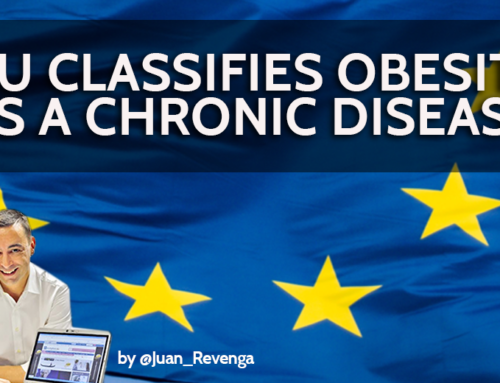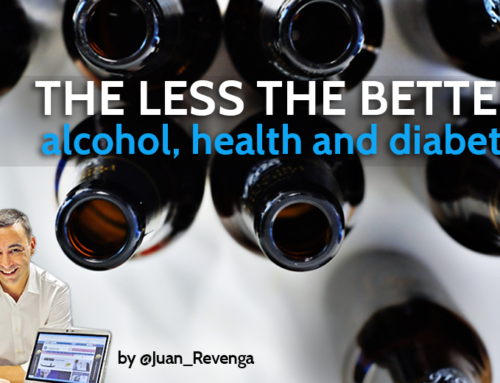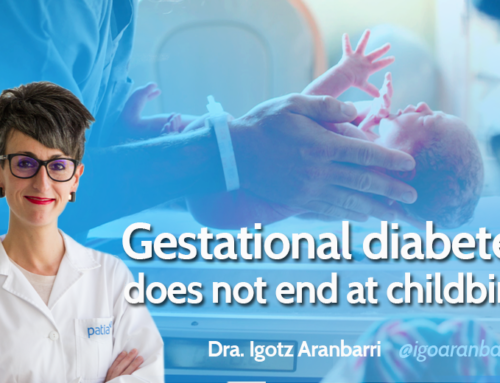There is not standard meal plan for people with diabetes, there are dozens
Last week I had the privilege of being invited to the XXVIII National Congress of the Spanish Society of Diabetes (SED) with Pablo Zumaquero, a fellow dietitian-nutritionist. We were invited to lead a workshop entitled “Low-fat diets or low-carbohydrate diets?”
The room conference was packed out. Several people came at the end of the workshop to ask for the presentation I did. This is the article that contains my presentation and its explanation.
The title itself already gives an eloquent account of the controversy that has today the dietary recommendations of the patient with diabetes. There is an intense debate on this. The exposition was articulated on three basic ideas developed below.

First: there is no ideal distribution of macronutrients
I began asking the audience it they knew the ideal proportion of carbohydrates, proteins and lipids present in the diet of a person with diabetes. A majority raised their hands implying that they knew what those percentages of macronutrients were. It was when the surprise came, since I brought up the lasted position paper of the American Diabetes Association, entitled Nutrition Therapy Recommendations for the Management of adults with Diabetes, 2013. And it turns out that in this document you can read some conclusions that caused surprise. These strong ideas are as follows:
- Evidence is inconclusive for an ideal amount of carbohydrate intake for people with diabetes.
- For people with diabetes, and no evidence of diabetic kidney disease, evidence is inconclusive to recommend and ideal amount of protein intake for optimizing glycemic control or improving one or more cardiovascular risk measure.
- For people with diabetes and diabetic kidney disease (either micro- or macroalbuminuric), reducing the amount of dietary protein below the usual intake is not recommended because it does not alter glycemic measures, cardiovascular risk measures, or the course of glomerular filtration rate decline.
- Evidence is inconclusive for an ideal amount of total fat intake for people with diabetes.
 The great conclusion of this block could only be one and is reflected in the mentioned document:
The great conclusion of this block could only be one and is reflected in the mentioned document:
- There is no standard meal plan, or eaten pattern that works universally for all people with diabetes.
Of course, it seemed appropriate to highlight two other lapidary phrases of this consensus regarding how and who should be the reference healthcare pro when it comes to addressing the nutritional issues of people with diabetes.
- Nutrition therapy should be individualized for each patient.
- Ideally, the individual with diabetes should be referred to a registered dietitian (or a similarly credentialed nutrition professional if outside the USA) for nutrition therapy at-or son after diagnosis and for ongoing follow-up.
(Something rather impossible in Spain since dietitian-nutritionist, who would be that professional of reference is not part of the health professionals of the Public Health Services)
Two: practical recommendations and consensus seem not to coincide
Regarding the significant amount of people who raised their hands, stating that it is clear (when in fact it is not), it may be explained by observing that those who write the most practical clinical recommendations don´t do it in the light of the most current consensuses. It seems that they do it based on previous consensuses, not updated and in this way, we live anchored in a kind of stable continuity recommending the same as 20, 30 or 40 years ago. Absurdly quantified diets to the proportion of macronutrients independently to some extent of the quality of these based on the origin of the foods.
Thus, it is not surprising that many of the dietary recommendations for the patient with diabetes repeatedly insist on excess of carbohydrates as they are grounded in the absurdity of the “balanced diet” based on the macronutrients proportion. As said in the Evidence-based nutrition guidelines for the prevention and management of diabetes of the British Institutes of Health (NICE):
- Focus should be on total energy intake rather than the source of energy in the diet (macronutrient composition) for optimal glycaemia control.
However, the issue becomes serious when some healthcare professionals maintain (with some industry backing) that patients with diabetes intake of carbohydrates can now be “free” since stands with insulin within the pharmacological treatment. That is almost like they say people with diabetes can get back and eat the same way that made them get into diabetes… non-stop carbohydrates. High frequency of intakes, with consistently high blood glucose values that require constant and high numbers of insulin. Such a disaster!
Three: more monounsaturated fats and less carbohydrates and saturated fats
Returning to the central theme of the workshop, carbohydrate versus fat, this issue was largely detailed through a major meta-analysis in this post in which was quite clear that:
- Consuming more unsaturated fats in place of either carbohydrates or saturated fats will help improve blood glucose control. Sole emphasis on lowering consumption of carbohydrates or saturated fats would not be optimal.
In simple words for people with diabetes:
- Translated to foods, these finding support benefits of increasing consumption or vegetable oils and spreads, nuts, fish, and vegetables rich in unsaturated fats (like avocado), in place of either animal fats or refined grains, starches and sugars.
Practical advices
First, as a corollary, the words of Dr. Dariush Mozaffarian of the Harvard School of Public Health in a commentary published in The Lancet on the role of saturated fats in type 2 diabetes called for the need to redesign the most popular dietary recommendations fleeing from classifications and health campaigns based on simplistic clusters of nutrients that are minimally related by the same chemical characteristic (in this case being saturated fatty acids). Current nutrient-centered recommendations and postulates are often used by industry to create confusion in a fully mediated population. It is time, therefore, to direct efforts towards the creation of food-based guidelines and recommendations and to have solid evidence of their effects on clearly established clinical data.
And finally, a call to health professionals to open their eyes, to update and offer the best advice to their patients based on the evidence, the mythical words of Max Plank who said: “A scientific truth does not triumph by convincing its opponents and making them see the light, but rather because its opponents eventually die and a new generation grows up that is familiar with it.”
By Juan Revenga, dietician-nutritionist and Biologist
Latest posts by Juan Revenga Frauca (see all)
- Obesity recognized as a chronic disease - 13 October, 2021
- Who said you have to eat everything? - 7 October, 2021
- Diabetes and Alzheimer - 29 January, 2021








